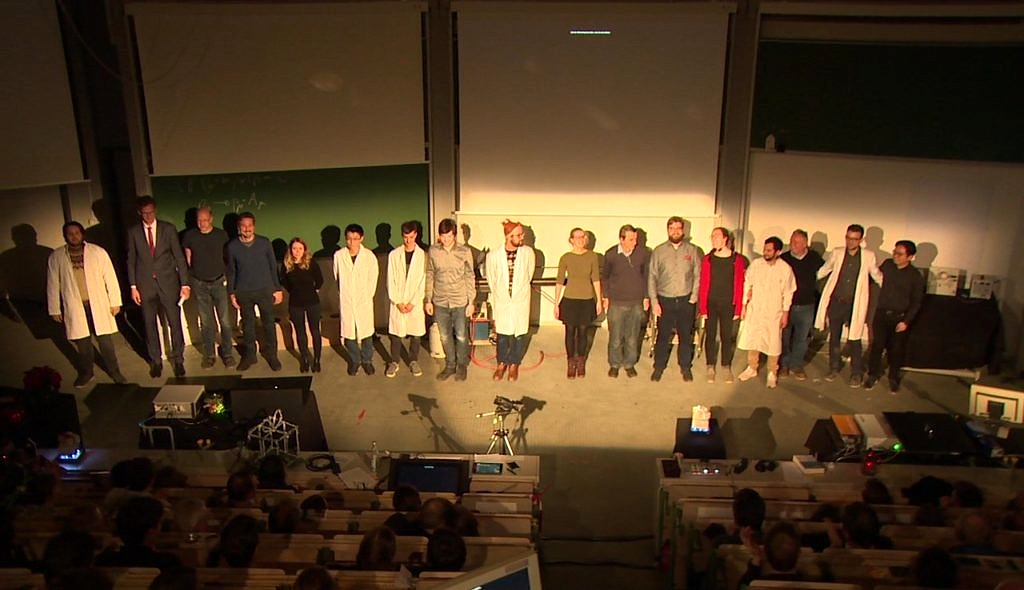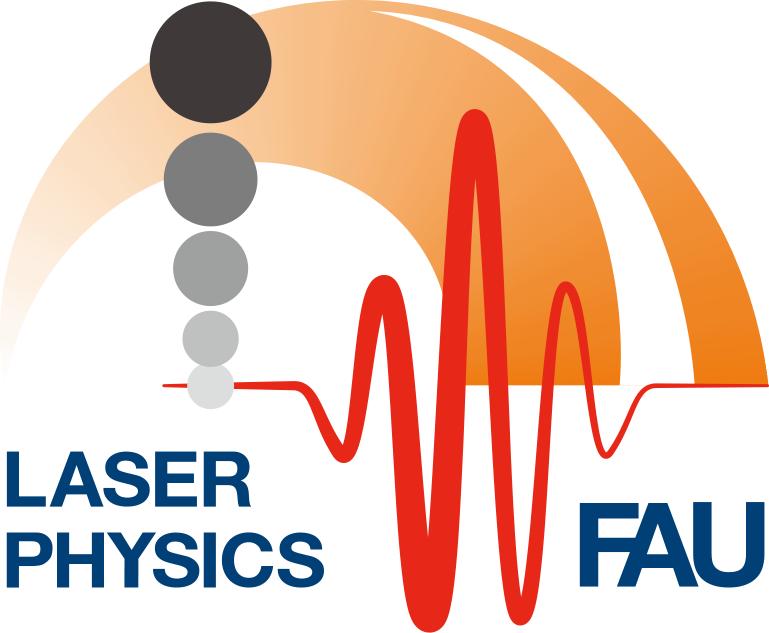Christmas lecture 2019
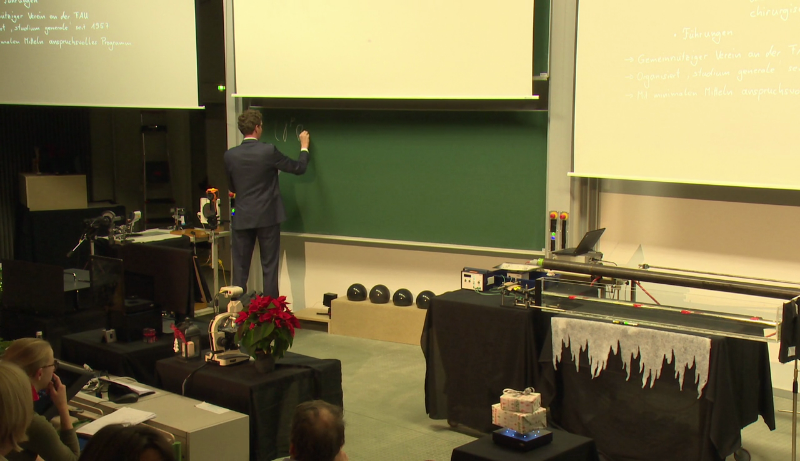 Just like visiting the Christmas market, buying presents and baking cookies, the Christmas lecture of the Department of Physics is an integral part of the pre-Christmas season for many FAU physicists. In December 2019, our department had the privilege and pleasure to host this annual event of the department. It all started with a simple sentence: “We are hosting the Christmas Lecture this year”, and was already enough to arouse the ambition of laser physicists. In no time at all, ideas were put together and first test experiments set up, always in search of the highest entertainment value. “Does the subwoofer have enough excursion?” “Where can you get a telescope mirror?” – “We need more lasers!” There seems to be an entertainer in every good physicist.
Just like visiting the Christmas market, buying presents and baking cookies, the Christmas lecture of the Department of Physics is an integral part of the pre-Christmas season for many FAU physicists. In December 2019, our department had the privilege and pleasure to host this annual event of the department. It all started with a simple sentence: “We are hosting the Christmas Lecture this year”, and was already enough to arouse the ambition of laser physicists. In no time at all, ideas were put together and first test experiments set up, always in search of the highest entertainment value. “Does the subwoofer have enough excursion?” “Where can you get a telescope mirror?” – “We need more lasers!” There seems to be an entertainer in every good physicist.
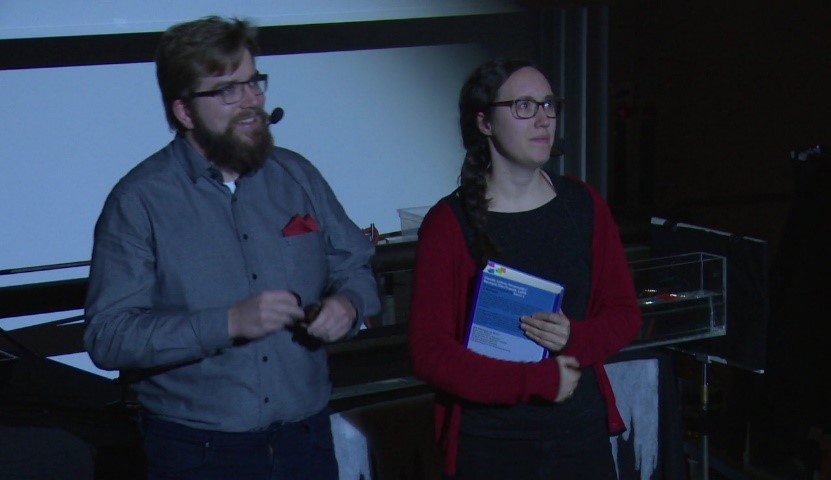
On 5.12. the time had come. Weeks of planning and rehearsals culminated in a two-hour show of superlatives. Under the motto “The Advent Calendar of Laser Physics” the actual lecture in the fully occupied lecture hall G of the Physikum started at 20:15. The expectations for an entertaining evening with many experiments were suddenly clouded when Professor Peter Hommelhoff opened the Christmas lecture in the style of a proper lecture. Thereupon he was immediately interrupted by two impatient “listeners” – none other than the two real presenters of the evening, Constanze Gerner and Norbert Schönenberger – to whom he handed over the direction of the evening and “angrily” left the hall.
With this dramaturgical feint, the actual Christmas lecture began. At the centre of the performance was the topic of wave-particle dualism, which was investigated with no less than 14 impressive and some certainly spectacular experiments. All in all, a successful performance, which found extremely positive resonance in the audience.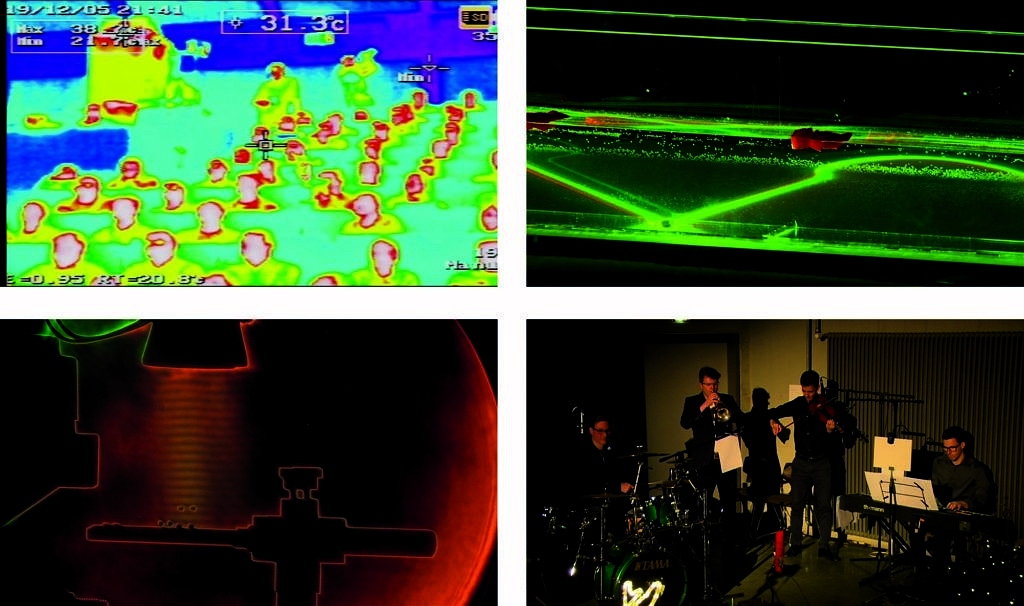
In addition to the excellent performance of the two presenters, the perfectly prepared experiments and the background music of the chair’s own band (Tobias Boolakee, Jonas Heimerl, Constantin Nauk and Timo Paschen) stood out. The team around Philip Dienstbier, Tobias Boolakee, Christian Heide, Jonas Heimerl, Johannes Illmer, Yuya Morimoto, Michael Seidling and Robert Zimmermann, to whom we owe a trouble-free evening, took care of the professional supervision of the experimental setups. Alexander Tafel and Ang Li were responsible for the lighting and the right ambience. Technology and presentation was provided by Stefan Meier and Stefanie Kraus. Responsible for the management in front of and behind the stage were Helene Müller, Martin Hundhausen and Jürgen Ristein. Responsible for the audio management was Michael Krieger from the chair of applied physics. Special thanks also go to Johannes Montag, responsible for the lecture hall experiment collection, for his active support in setting up the experiments.
